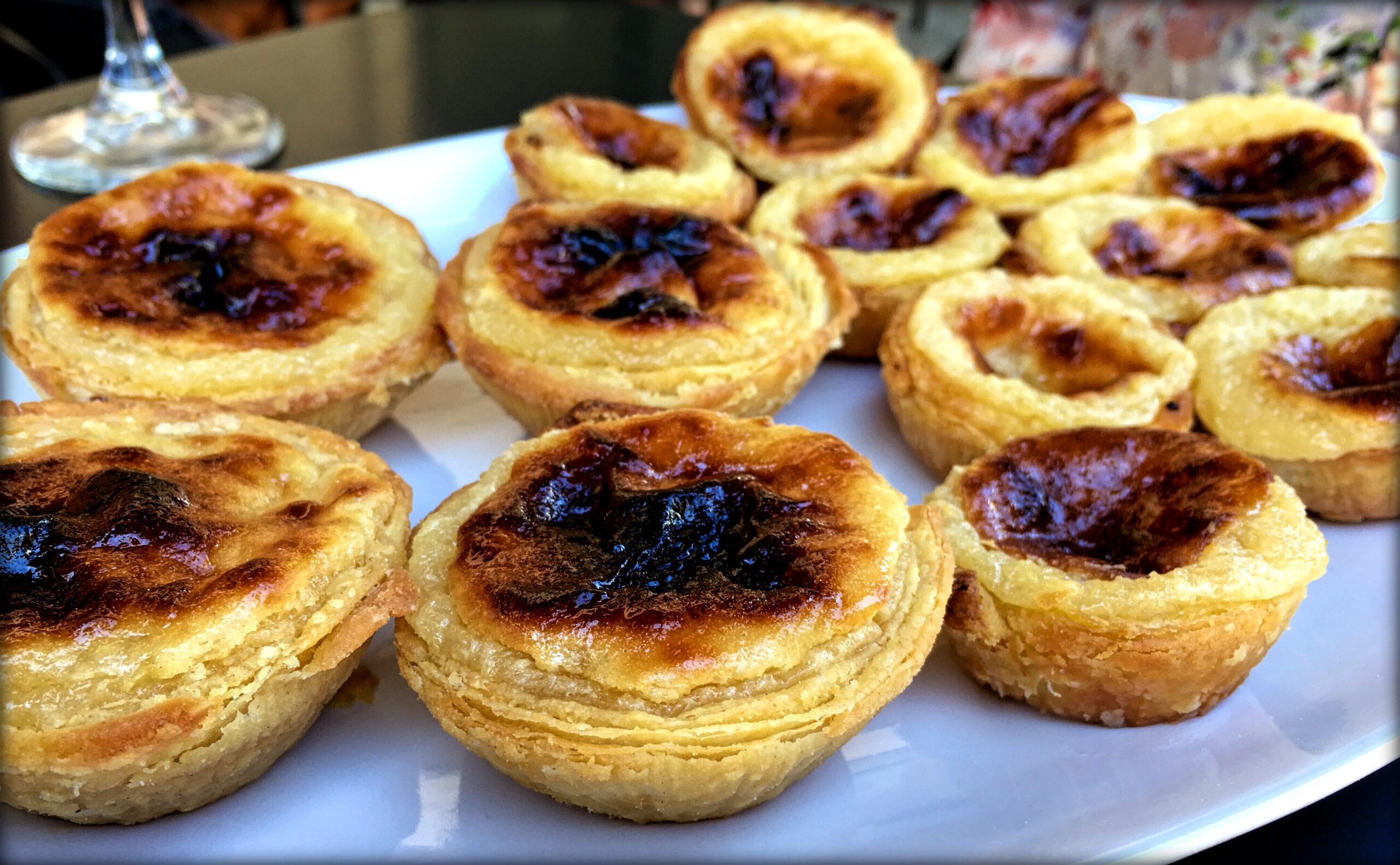Practice Makes Perfect – Chão Das Almas – Lisbon, Portugal

As we mentioned yesterday, we love pastéis de nata. So much so that a few years ago we spent over a month trying to learn how to make them. We knew it wouldn’t be easy, but we didn’t realize that it would be almost impossible.
Pastéis de nata originated in monestaries and convents. They used egg whites to starch their clothes, and they needed a use for the yolks – and thus the pastry was created. Today, most bakeries follow their own recipe, and most recipes are about the same, but the ones that have perfected their technique stand out above the rest. The recipe at Pastéis de Belém has been kept a family secret for nearly 200 years, and is currently only known by three people. We wanted to be able to make some that were that good…or at least as good as the ones we get from the Portuguese bakery in New Jersey.
We looked at recipes online and hit the kitchen. What we ended up with looked terrible, tasted ok, but wasn’t right. Before round two, we did more research, searched for a Portuguese cookbook with a red cover in Christine’s parents’ basement that may have had an authentic recipe (we never found it), and talked to a friend living in Lisbon. Round two went about the same as the first. Our problem was the dough. Getting the flakey layers was challenging. We may like to cook, but we’re not pastry chefs! One afternoon we found ourselves at the Portuguese Club in Bethlehem, where surely someone would have a recipe…but no luck. We were told that “you don’t make pastéis de nata, you buy them.” After many more failed attempts, we conceded – we would just continue to buy them.
But now, a few years later, we may have finally figured it out. Our trip brought us to Lisbon, where we found a cooking class, at a bakery, that would teach us how to make the pastel de nata. With a professional pastry chef guiding us and looking over our shoulder, we made a batch of two dozen pastéis de nata from scratch, dough and all. And they were delicious! The shell was perfectly layered and crispy. The custard was smooth and rich, with the perfect amount of carmelization on top. After many failed attempts, we had finally succeeded in a big way! There were a few tricks that we had suspected but weren’t sure of, and a few tricks that we never would have guessed.
When we get home, this will be one of the first recipes we make. These weren’t exactly like the ones that we get in New Jersey, but we’re 90% there. We’ve already been brainstorming what we need to do differently to get them just right. It will take some practice, and we’ll need taste testers…anyone interested?
